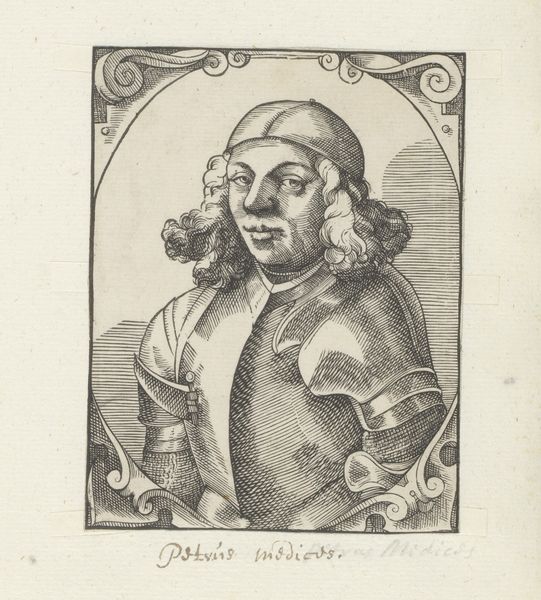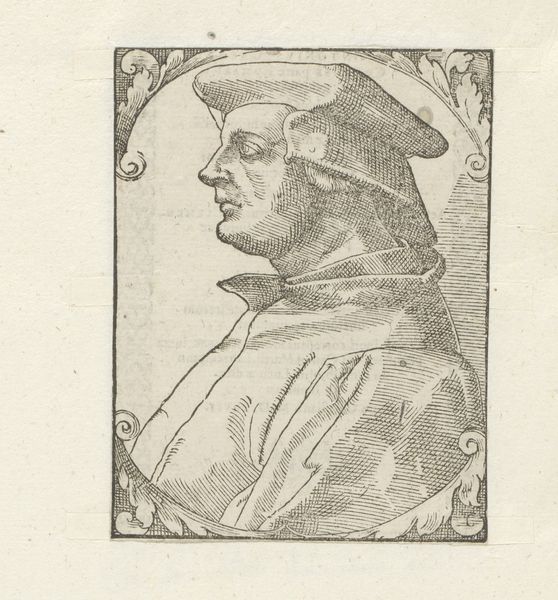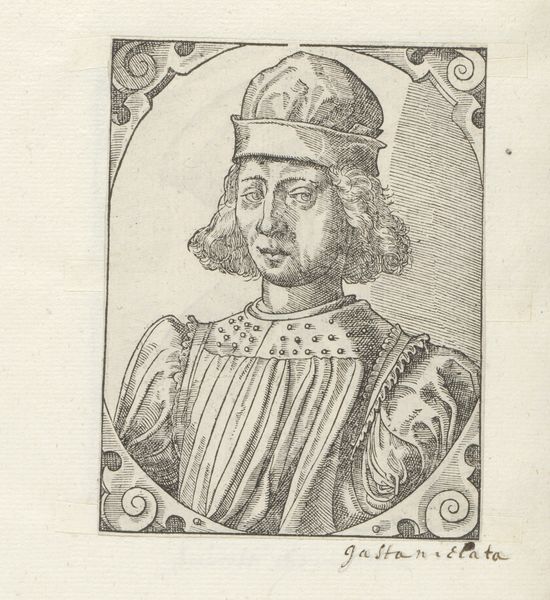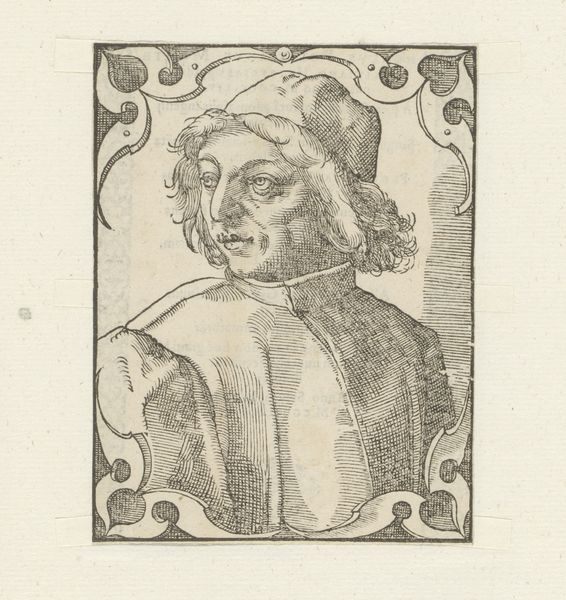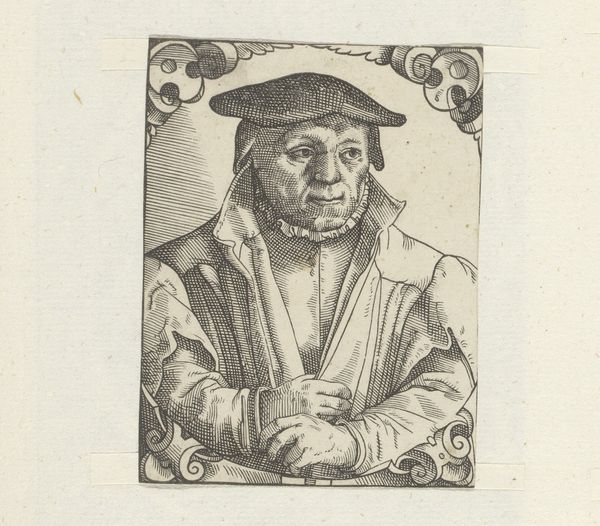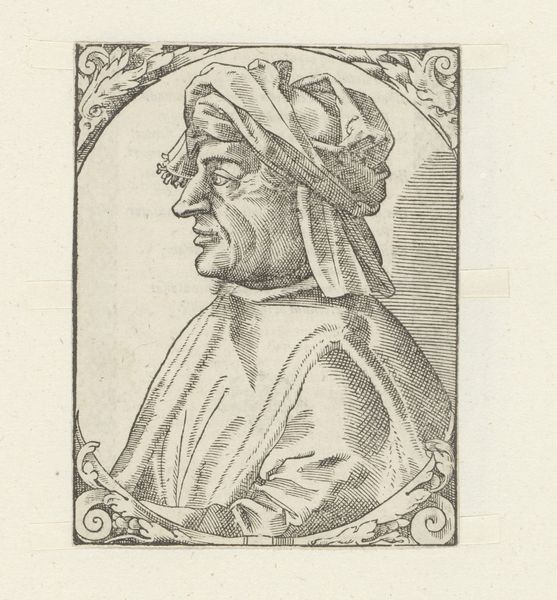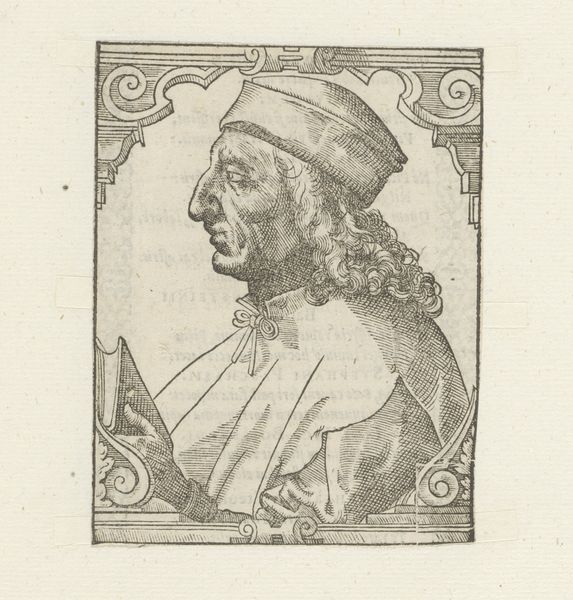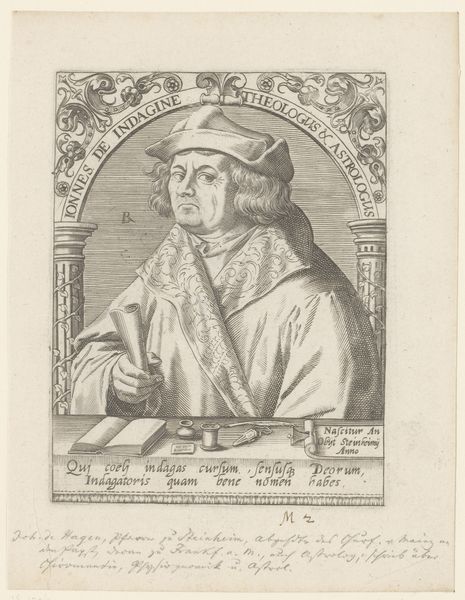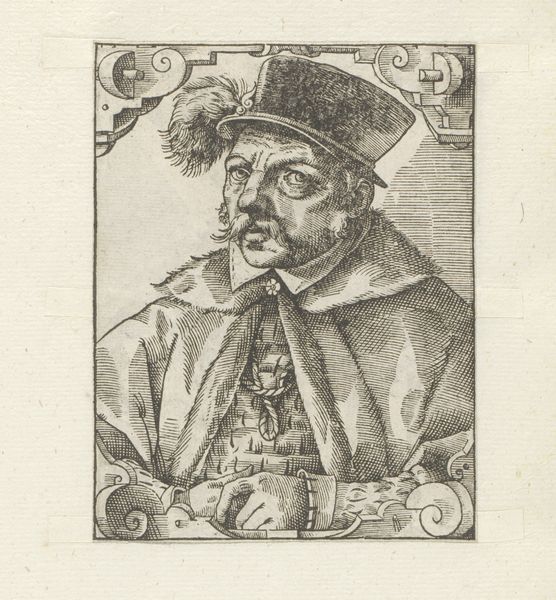
print, engraving
#
portrait
# print
#
pencil sketch
#
old engraving style
#
mannerism
#
engraving
Dimensions: height 108 mm, width 82 mm
Copyright: Rijks Museum: Open Domain
Curator: Ah, this print of Marcantonio della Torre from somewhere between 1549 and 1584 is intriguing. It’s done in an old engraving style, almost like a pencil sketch immortalized. What springs to mind for you? Editor: Immediately, that frame feels like a cage. Look at Marcantonio’s eyes; he seems trapped, both by the rigid lines of the engraving and something deeper, perhaps the expectations of his time. Curator: True, the mannerist style does lend itself to that sort of controlled tension. The meticulous detail, especially in the hair and the folds of his clothing, it almost feels obsessive, don't you think? Like the artist was trying to capture every fleeting moment of Marcantonio’s essence. Or was merely bound by it. Editor: Precisely! Mannerism, often used by elite patrons, reinforces social hierarchies and ideals of beauty. Is this really capturing essence, or manufacturing an identity that upholds power structures? Consider his garment: that subtle and not-so-subtle display of wealth. It reminds me how portraiture in that period could mask political agenda. Curator: Well, maybe it's a dance between both. It seems like the artist found him interesting, worthy of time and permanence. Do you think that everyone that commissions something should feel morally pure? Sometimes great works spring from very problematic sources, after all. This guy seems gentle, a tad melancholic even... The power structure implications did not occur to me! Editor: Gentle, yes, but perhaps that's the veneer. Those "melancholic" eyes could just as easily reflect the burden of privilege and expectations during an era rife with socio-political and religious upheaval. Did his "gentleness" uphold or challenge inequity? Even in his era, that "gentleness" was only allowed for certain profiles. Curator: See, I didn’t pick that up at all. I think, maybe, that he just wanted to exist peacefully, and so he accepted whatever role was afforded him in his strange historical moment. It might sound romantic, but in his place, I think I would be tempted to also make art quietly. To hide in plain sight and, somehow, try to be. Editor: A tempting narrative, and perhaps partly true. But even 'being' is a political act. That acceptance reinforces those 'afforded' roles and impacts marginalized others who may not enjoy similar peace or 'gentleness.' What does this image suggest about the lives *not* portrayed in engravings? Curator: It highlights the painful inequality and how easily art can become an unintentional tool of power… Perhaps we’re both right and it's that push and pull that makes it so strangely mesmerizing still after all this time. Editor: Indeed, a crucial tension that underscores the necessity of interrogating visual languages of the past—lest they continue shaping inequitable realities today.
Comments
No comments
Be the first to comment and join the conversation on the ultimate creative platform.

